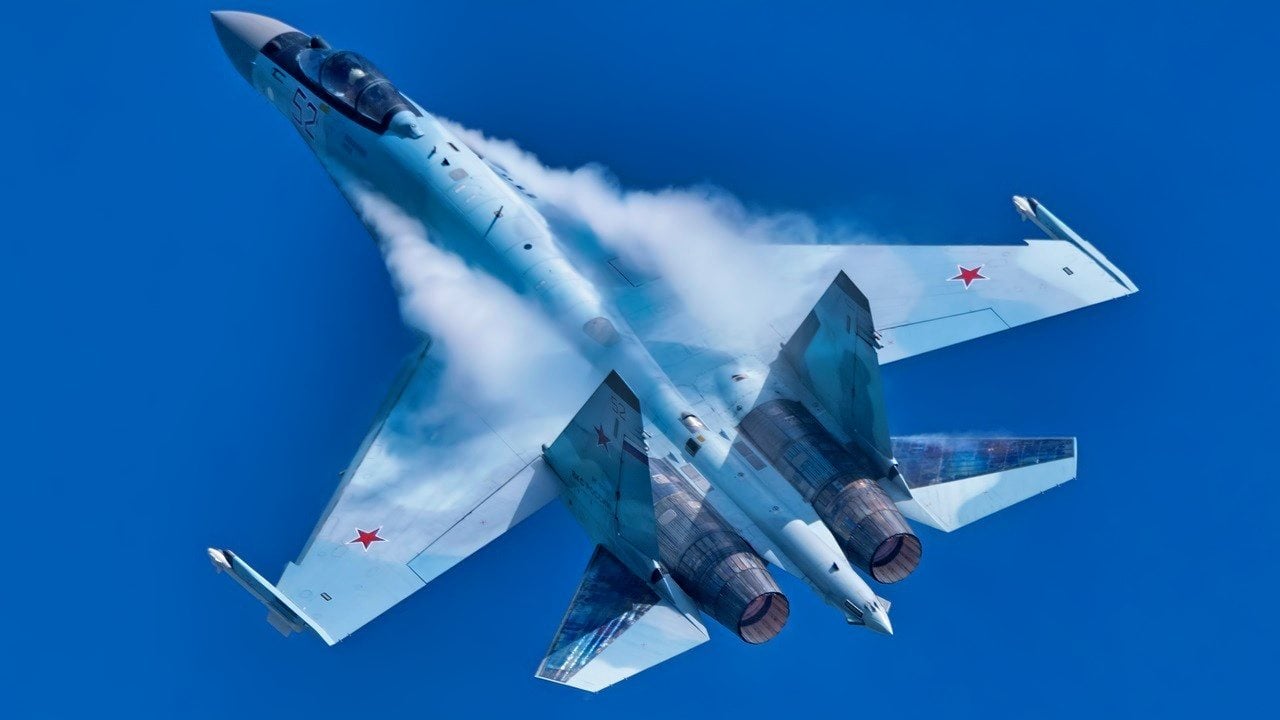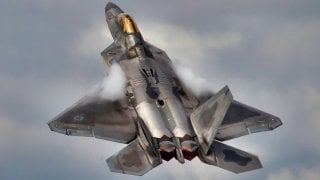Real Top Guns: Top 5 Fighter Jets from U.S. Military and Russia
Fighter jets have been crucial to military success since World War II. The U.S. leads with advanced fighters like the F-22 Raptor, F-35 Lightning II, F-15EX, and the F/A-18 Super Hornet, offering unmatched stealth, speed, and firepower.
Top 4 Points You Need to Know: Fighter jets have been crucial to military success since World War II. The U.S. leads with advanced fighters like the F-22 Raptor, F-35 Lightning II, F-15EX, and the F/A-18 Super Hornet, offering unmatched stealth, speed, and firepower.
-The F-22 remains the most advanced air superiority fighter, while the versatile F-35 is the most widely used fifth-generation jet.
-Russia's top fighters include the Su-57 Felon, Su-35, MiG-29, and MiG-35, but they lag behind in stealth and export success.
-The Su-57 is Russia's only fifth-generation jet, while older platforms like the Su-35 are still heavily relied upon.
F-35 vs. Su-57: U.S. and Russia's Best Fighter Jets
Fighter jets have been key to success in combat since World War II. Japan’s attack on Pearl Harbor was perhaps the first demonstration of the dominant role fighters play on the modern battlefield.
Not all fighters are created equal, of course. Stealth, speed, armaments and avionics vary greatly among platforms. Let’s take a look at the U.S. and Russian fighters that fly at the head of their classes: the F-35, F-22, F-15EX, and Block III F/A18 Super Hornet on the American side, along with the Russian-made Su-35, Su-57, MiG-29, and MiG-35.
Top American Fighter Jets: F-22, F-35, F-15EX and More
The F-22 Raptor entered service more than two decades ago as the world’s first fifth-generation fighter. The Raptor was the first aircraft to combine supermaneuverability, stealth, and super-cruise. The F-22’s most significant attribute is undoubtedly its ability to remain invisible to enemy airframes thanks to its small radar cross-section and twin thrust-vectoring engines.
The F-35 Lightning II is the latest U.S.-designed fifth-generation jet. Its combination of speed, stealth, and robust armaments make it the most coveted tactical airframe in the world. In fact, there are more F-35s flying today than all other stealth platforms combined.
The reason that more than 900 F-35s have already been exported is the platform’s multi-functionality. The Lightning II can provide intelligence, surveillance, electronic warfare, and reconnaissance capabilities, and it can do all of this better than its counterparts.
While the Lightning II is widely considered to be the best of the best, it is not the priciest American-made fighter on the list. That title goes to the F-15EX, which reportedly costs roughly $94 million per unit to produce. The Eagle II’s outstanding capabilities perhaps make up for its hefty price tag. Earlier this year, the powerful platform proved it was able to carry and launch up to 12 air-to-air missiles during flight. The ability to lug up to 13.6 tons of ordnance makes the F-15EX the true bomb truck of the skies.
The final American-made platform that certainly qualifies as one of the best fighters on Earth is the latest Super Hornet iteration. More than 20% larger than earlier variants, the F/A-18 Block III Super Hornet’s enhanced ordnance capacity, stealth qualities, and range make it a mainstay for the U.S. Navy. The upgraded variant also is equipped with a 10x19-inch customizable touch screen, a major improvement for pilots. Thanks to these advanced displays, pilots can process information using the Distributed Targeting Processor-Networked MC. This mission computer carries more than 17 times the processing power of earlier variants.
Top Russian Fighter Platforms: Su-57, Su-35 and More
Like the U.S., Russia also holds four solid fighter platforms in its aerial arsenal. However, only one fifth-generation jet currently flies with the Russian Aerospace Forces. The Su-57 “Felon” features a variety of improvements over its Soviet-era predecessors. The fighter can reach Mach 2.0, making it faster than the F-35 Lightning II.
Despite its speed, the Felon suffers from some serious design setbacks. For one, the Su-57 is certainly not as stealthy as either of its fifth-generation American counterparts.
The Felon may be Russia’s only fifth-generation fighter, but Moscow has relied far more heavily on its fourth-generation fighters during its invasion of Ukraine.
The Su-35 was designed by the Soviet Union as a counter to American-made F-14 and F-15 jets during the Cold War. Equipped with two Sturb/UFA AL-31F 117S turbofan engines, the Su-35 can reach speeds in excess of Mach 2.25, which is equivalent to the Raptor and much faster than the Lightning II. Additionally, the Su-35 possesses a formidable secondary air-to-ground capability.

The Su-35 is not the only Soviet-era platform still flown by Russian pilots. The Mikoyan MiG-29 was designed as a multirole fighter. The jet can carry nearly 9,000 pounds-worth of weaponry, including the AA-10 Alamo, AA-II Archer and AA-8 Aphid.
Russia considers its MiG-35 fighter to be a “4+++ generation” platform. Moscow first debuted the “Fulcrum-F” in 2007 as a successor to the MiG-29. The aircraft hosts an Active Electronically Scanned Array radar manufactured by Mikoyan, which gives it an edge over previous Soviet airframes.
Each MiG-35 can carry an assortment of missiles, rockets and bombs, including Kh-31A anti-ship missiles, the Kh-31P anti-radar missiles, the Kh-29TE missiles and the KAB-500Kr TV-guided bombs. While this platform is solid on paper, Moscow has failed to export the Fulcrum-F with success and remains the only country to fly the fighter.
About the Author: Maya Carlin
Maya Carlin, National Security Writer with The National Interest, is an analyst with the Center for Security Policy and a former Anna Sobol Levy Fellow at IDC Herzliya in Israel. She has by-lines in many publications, including The National Interest, Jerusalem Post, and Times of Israel. You can follow her on Twitter: @MayaCarlin. Email the author: [email protected].
Image Credit: Creative Commons and/or Shutterstock.


